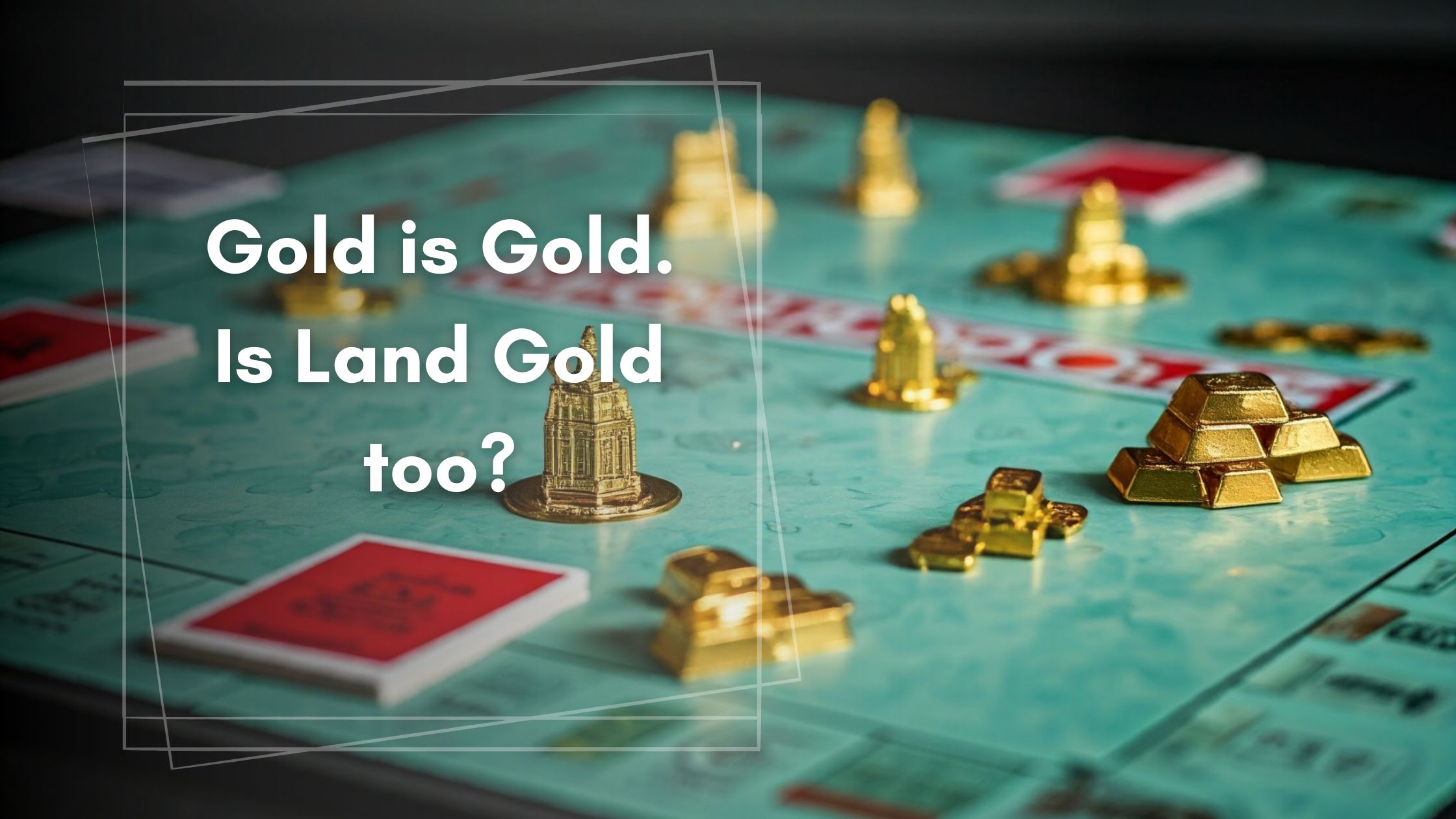Gold is Gold—Is Land Gold Too?
In today’s fast-paced world, it’s worth asking: do we truly understand the best ways to invest our money? While the previous generation offers invaluable wisdom from their experiences, the context has changed dramatically. Just think—there were no mobile phones 20 years ago, and now we’re navigating the complexities of AI.
The Evolution of Investment
In India, a long-standing piece of advice has been to invest in real estate and gold. This philosophy was so prevalent that many Indians allocated almost all their investments to these two assets. Alongside, fixed deposits (FDs) and small savings schemes—like those from the Post Office—were the go-to options. It’s easy to assume that only a select few—Gujaratis, Marwaris, city dwellers, and high-net-worth individuals—ventured into the stock market, as its depth and breadth were limited, with volatility posing significant risks for the average investor.
The Rise of Finfluencers
The internet has transformed this landscape. The rise of “finfluencers”—influencers specializing in personal finance—has led to a surge in promoting equity ownership and stock market investments. The Gamestop saga captured the imagination of retail traders who banded together against hedge funds, showcasing the power of collective action. The emergence of discount and zero-fee brokers like Zerodha and Groww made it easier than ever to open demat and trading accounts.
As a result, traditional investments like FDs, gold, and real estate have lost their appeal. Young investors in India are increasingly drawn to the stock market, supported by historical data showing robust returns across various asset classes. But is investing in stocks as straightforward as it seems? Why have gold and real estate fallen out of favor?
The Case for Gold and Real Estate
Gold remains a liquid asset and a hedge against market volatility. Traditionally, many invested in gold jewelry, while more sophisticated investors opted for bullion. Although gold prices generally rise, emotional attachments to jewelry and the belief that it doesn’t generate income have led some to explore other avenues.
Real estate is often seen as secure but illiquid. Real Estate also hold emotional value for people similar to gold. While many people view their homes as valuable assets, it’s important to consider the nuances involved. For a deeper dive into this topic, check out my blog post, ‘Home - Asset or Liability’, where I explore whether owning a home truly constitutes an asset or a liability.
Coming back to real estate as investment, you often hear stories of properties purchased for X and sold for 2X. However, many overlook the time required and the internal rate of return. Some investors seek rental income, but residential yield rates in India are still relatively low. Additionally, buying property typically requires a significant upfront investment, often necessitating loans. When liquidity is crucial, selling property at desired rates can be challenging due to its illiquid nature.
The Appeal of Stocks and Mutual Funds
Stocks and mutual funds offer liquidity and historically decent returns. So why not just stick to equities? The reality is more complex. Many young investors chase high returns, succumbing to FOMO (fear of missing out) and investing in whatever is currently trending—be it crypto, derivatives, or other assets. While savvy investors can navigate market trends and time their entries and exits, those who follow fads often find themselves trapped in down cycles, leading to substantial losses.
A Changing Investment Landscape
Recent news indicates that gold prices are at an all-time high, while the properties seems more expensive than ever. This shift has prompted many to reconsider their investment strategies, as the historical returns of gold and real estate now look more attractive in comparison to stocks. But will this upward trend continue?
Most asset classes experience cyclicity—prices rise and fall over time. Although assessing real returns can be tricky, nominal returns reveal trends and cycles. What goes up must come down. Some assets have shorter cycles, while others last for years, complicating the comparison of returns based on your current position in the cycle.
Strategies for Meaningful Diversification
Given this landscape, how should we approach gold and real estate? I advocate for meaningful diversification, which minimizes risk without significantly sacrificing returns. Consider holding a portion of both gold and real estate. The ideal proportion depends on your risk appetite and financial situation. If you’re early in your career, you might lean toward riskier assets for higher potential returns. As you near retirement, however, your focus should shift to safeguarding your capital while securing steady, reliable returns.
Investment Options Today
So, how should you invest? Today, options abound: gold ETFs, gold bonds, and digital gold make investing in gold easier than ever. Similarly, there are REITs, INVITs, and fractional ownership opportunities in real estate. You might also consider investing in companies involved in real estate or mining. These new instruments provide advantages that enhance security, liquidity, and accessibility.
Trust and Transparency
What if you don’t trust institutions or governments? For instance, the U.S. government has been criticized for printing money without sufficient accountability. What if a crisis arises and the currency loses its value? If these concerns resonate with you, physical ownership of assets may be more appealing. For others, exploring innovative investment instruments can be a worthwhile endeavor.
Conclusion: A Call for Wisdom
Ultimately, the key to successful investing lies in maintaining a well-diversified portfolio that suits your individual needs while avoiding the pitfalls of FOMO. Most significant returns are achieved through patience and the power of compounding. This is why many traders fail to profit—timing the market is nearly impossible, and those who believe otherwise often find themselves burned.
So, be wise. Learn from the experiences of your parents and the older generation, and evaluate whether their insights hold value in today’s ever-changing investment landscape.
